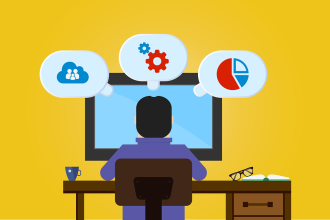The internet has become an integral part of daily life, intertwining with almost every aspect of our personal and professional activities. However, this increased reliance on digital technology also brings with it a surge in cyber threats, posing significant risks to our online privacy and security.
From phishing scams and malware attacks to data breaches and identity theft, the virtual landscape is fraught with dangers that can compromise our sensitive information and disrupt our digital well-being. This guide aims to equip you with the knowledge and tools necessary to protect your online presence, ensuring safe navigation through cyberspace and safeguarding your digital footprint against potential online threats.
Understanding Cyber Threats
The first step in protecting your online presence is understanding the nature of cyber threats. Cyber threats can range from malware, designed to damage or gain unauthorized access to your system, to phishing scams that trick you into giving away sensitive information. Equally perilous are ransomware attacks, which lock you out of your devices or files until a ransom is paid, and spyware, which covertly collects your personal information. By staying informed about these threats, you become better equipped to recognize and avoid them.
Knowledge is power, especially when it comes to cybersecurity. Regularly updating your knowledge on the latest cyber threat trends and understanding how they operate can drastically reduce your vulnerability.
Many cyber threats prey on the uninformed, exploiting common security weaknesses such as outdated software and weak passwords. Awareness and education are your first lines of defense in the digital realm. Enter SOC services or Security Operations Center services. These services offer round-the-clock monitoring and analysis of your system’s security, providing real-time alerts and remediation in the event of a cyber attack. By entrusting your system to SOC services, you can rest assured that experts are keeping an eye on potential threats while you go about your daily routine.
Protecting Personal Information
Safeguarding your personal information is crucial in the digital age. Ensure that your social media profiles are set to private and be mindful of the information you share online. Personal details, such as your address, phone number, or date of birth, can be used by cybercriminals to steal your identity. It is also important to be cautious of phishing scams, which often appear as legitimate emails or messages, asking for personal or financial information.
Additionally, using strong, unique passwords for different accounts and enabling two-factor authentication where possible can significantly improve your online security. Consider using a password manager to keep track of your passwords securely. Remember, sharing less and protecting more should be your motto when it comes to personal information on the internet.
The Role of Anti-Virus and Firewalls
Anti-virus software and firewalls act as the first line of defense against cyberattacks. Anti-virus programs scan your computer for malicious software and files, helping to prevent, detect, and remove malware before it can cause harm. Meanwhile, firewalls monitor incoming and outgoing network traffic, blocking unauthorized access to your computer or network. Together, they provide a robust shield against various cyber threats.
Investing in reputable anti-virus software and properly configuring your firewall settings are necessary steps in enhancing your cybersecurity. Regularly updating these security measures ensures they remain effective against the latest threats. Do not overlook the importance of these tools, as they are central to protecting your devices and sensitive information from unwelcome intrusions.
Secure Internet Practices
Adopting secure internet practices is fundamental to online safety. Always ensure that the websites you visit are secure, indicated by “https” in the URL and a lock icon in the address bar. Be wary of downloading files or clicking on links from unknown sources, as these could be gateways to malware. When shopping online, use websites that you trust and make sure your payment information is encrypted.
Consider using a virtual private network (VPN) to encrypt your internet connection, especially when using public Wi-Fi networks. A VPN protects your online activity from being intercepted, making it more difficult for cybercriminals to access your personal and financial information. Secure browsing habits, combined with an awareness of potential online risks, can significantly mitigate the chance of falling victim to cyber threats.
Regular Updates and Backups
Keeping your software and systems up to date is vital for cybersecurity. Software developers regularly release updates that fix security vulnerabilities and enhance functionality. Neglecting these updates leaves you exposed to cyberattacks that exploit outdated software. Automate software updates where possible, to ensure that you’re always running the latest version.
Regularly backing up your data is a critical practice. In the event of a cyberattack, such as ransomware, having a recent backup of your files can prevent data loss. Use cloud storage services or an external hard drive to back up important documents and photos. Ensuring that you have an up-to-date backup provides peace of mind and a safety net against the potentially devastating effects of cyber threats.
In the vast and evolving digital landscape, safeguarding your online presence is more crucial than ever. By understanding cyber threats, protecting personal information, utilizing anti-virus and firewall defenses, practicing secure internet habits, and keeping systems up to date and backed up, you can significantly enhance your cybersecurity posture.
The responsibility for online safety does not rest solely on individuals; it requires the collaboration of communities, businesses, and governments to build a safer digital world for everyone. Staying informed, vigilant, and proactive in your digital interactions will not only protect your data but also contribute to the broader effort of creating a secure online environment.













